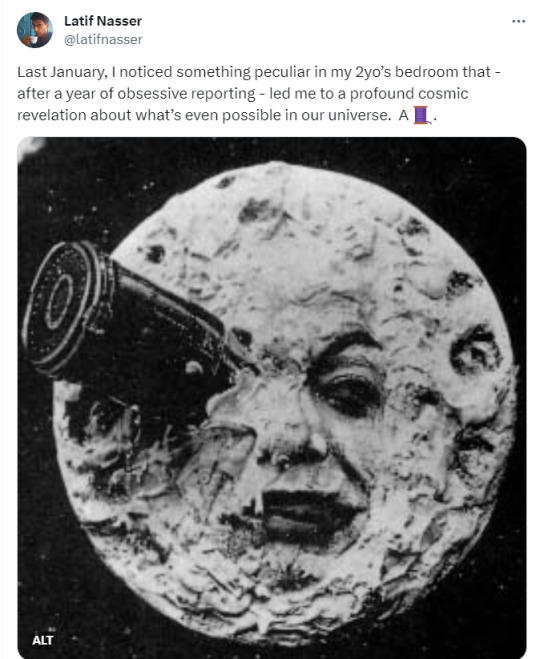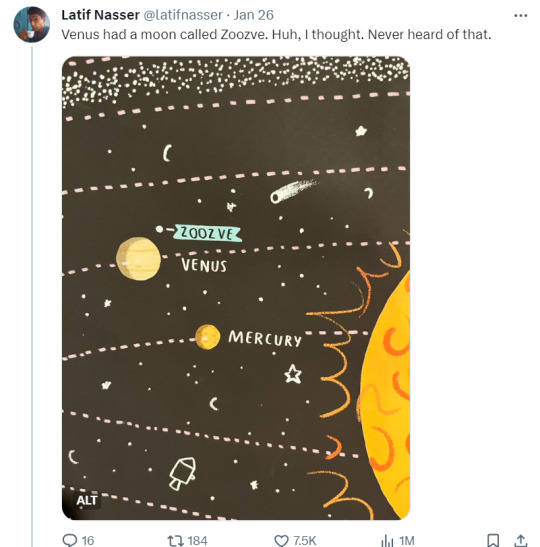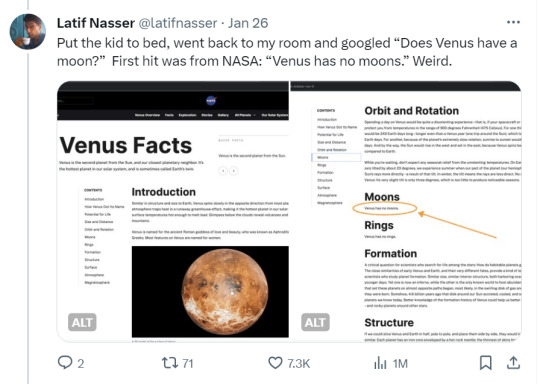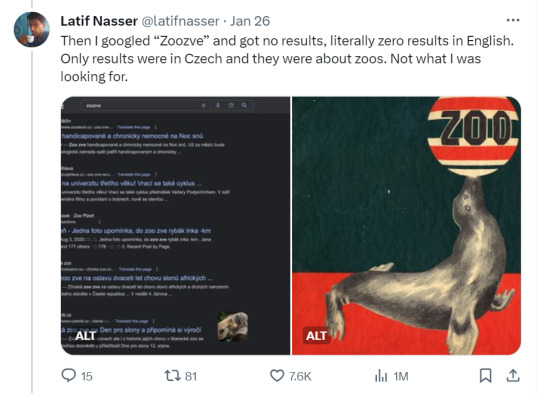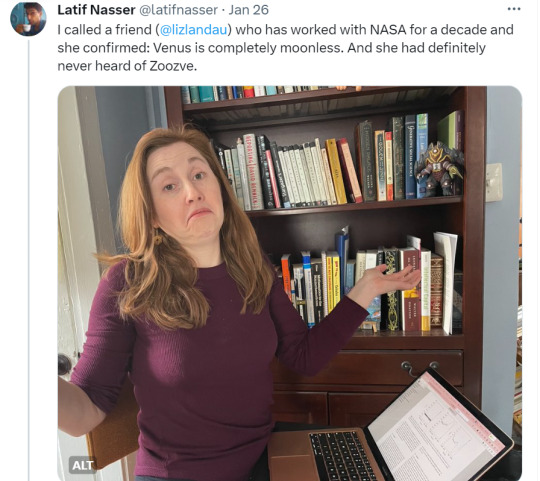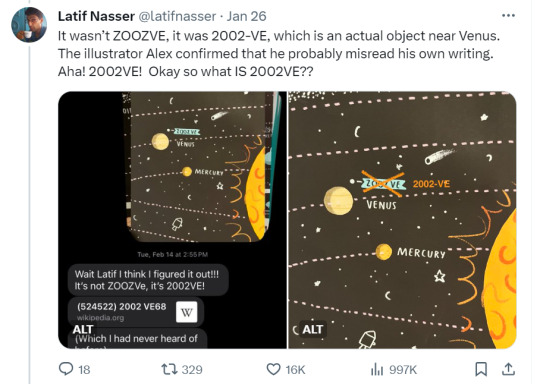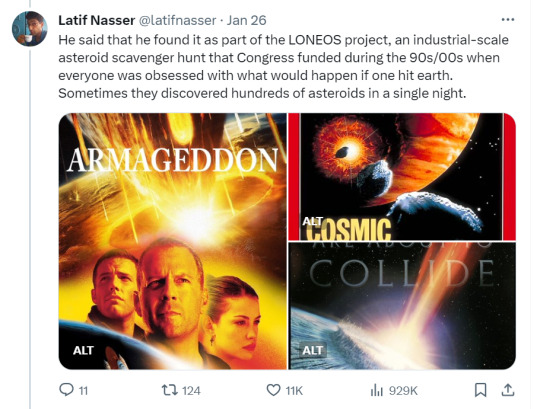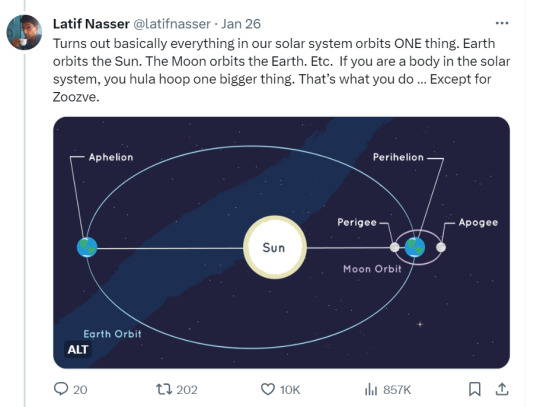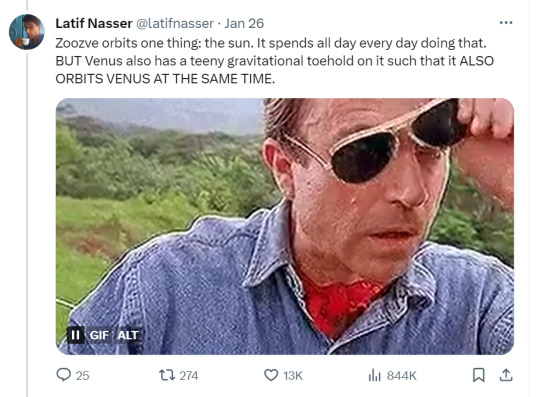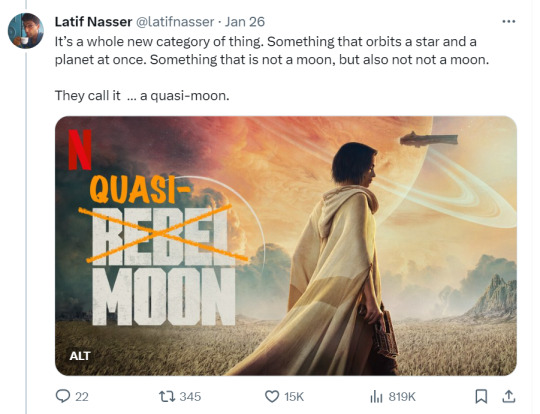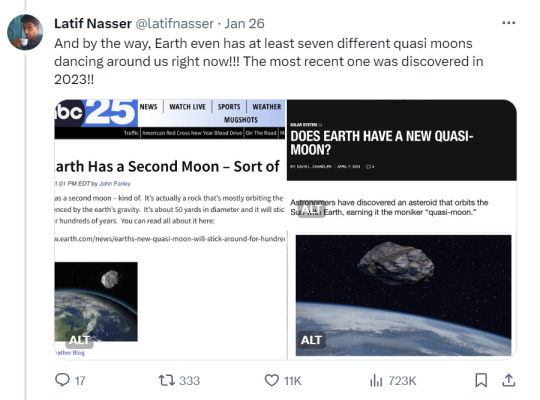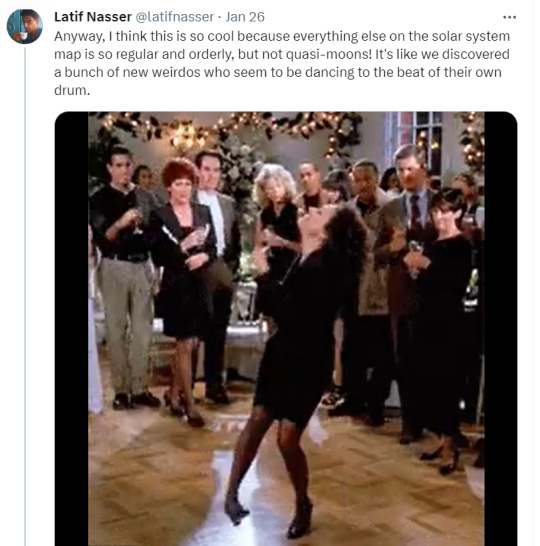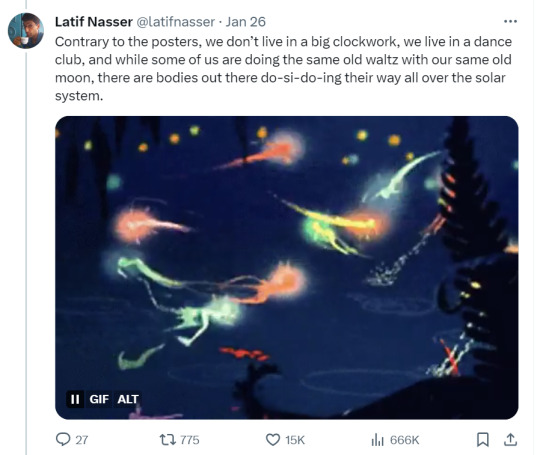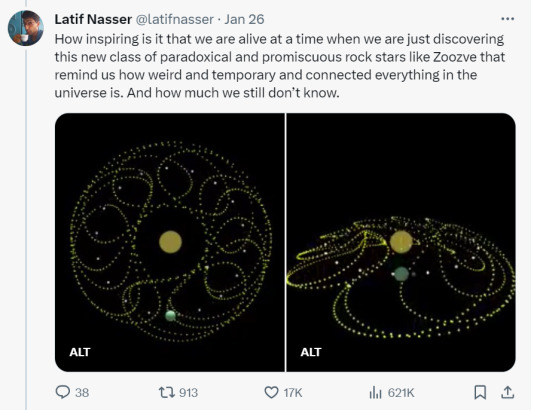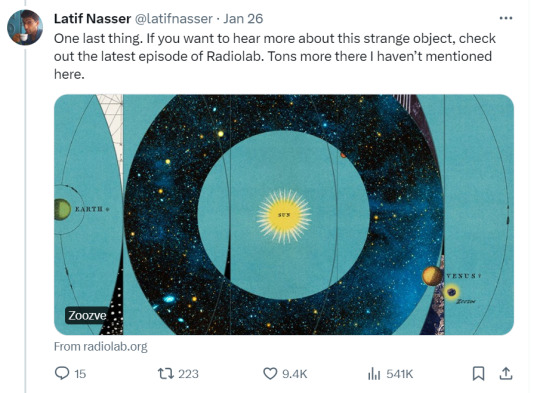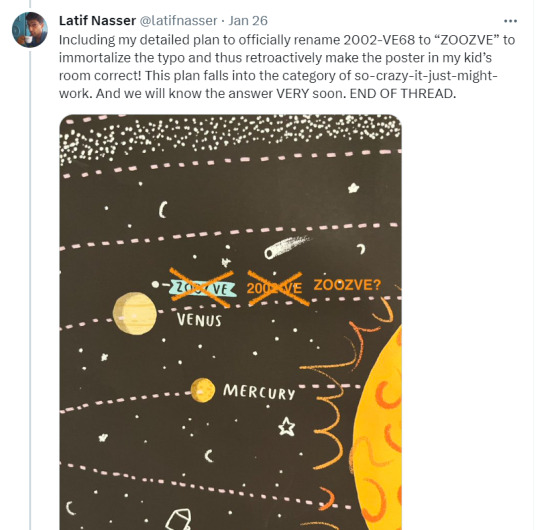Text
Maybe this is the wrong platform to pose this question given the average tumblr user but
Is it just me or did our generation (those of is who are currently 20-30 ish) just not get the opportunity to be young in the 'standard' sense?
Like, everyone I talk to who's over 40 has all their wild stories about their teens and 20s, being young and dumb, and then I talk to my friends and coworkers and classmates, and we just... dont.
65K notes
·
View notes
Text
You know what messes me up?

This dinosaur skeleton is incomplete. But, it doesn't look that way to us, because the parts it's missing are parts we don't have.

See how there are ribs on the bottom? Those are called gastralia. That's right, dinosaurs had ribs on their stomachs as well, and modern crocodiles and alligators still have them! (Also, notice that the ribs keep going to the hips instead of stopping above the waist. This is also true of modern birds, and why a bird can't have a concave stomach!)

Next, notice that ring floating in the center of the eye socket? That's called a sclerotic ring! Fish, reptiles, birds--with the exception of mammals (and, oddly enough, crocodilians), pretty much all modern vertebrates still have them! It's literally an eyeball bone. Afaik we haven't found a T-rex specimen with any intact, but since we've found them in other dinosaurs, it's very likely they had them too.
So, keep that in mind next time you see a dinosaur skeleton.
59K notes
·
View notes
Text
Aren’t vampires “undead” or is that term just figurative
living things are meant to see the sun and when they can’t for an extended period of time they get a bit deranged. That’s why vampires are like that.
2K notes
·
View notes
Text
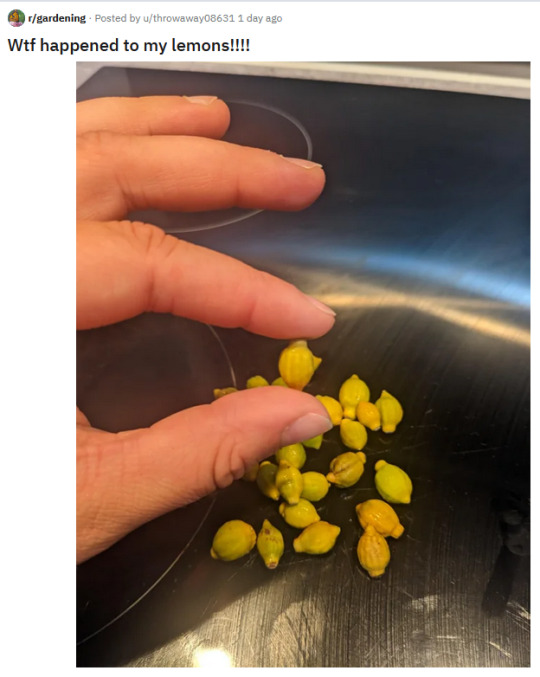
there's just something so funny to me about shitty harvests
34K notes
·
View notes
Text
Hey, hot take, but if a company decides they no longer want to distribute a piece of media they own the rights to, then they should be legally required to sign the rights back over to the creator.
They shouldn't be allowed to just sit on the IP for the rest of time, especially if they have no intention of ever releasing it again.
36K notes
·
View notes
Text
48K notes
·
View notes
Text
Reblog to open a rail line from your blog to the person you reblogged this from

152K notes
·
View notes
Text


Some fanart of this ancient figurine! Also got commissioned to draw her hanging out with a friend!

60K notes
·
View notes
Text
Ok KO is such a weird show because I didn’t watch a single episode of it when it was running nor did I see many people talk about it but now every once in a while I’ll hear something like “hey did you know that they did a crossover episode with Sonic the Hedgehog” or “did you know that they got Jon Davis to do an episode of the show where he speaks exclusively in nu metal references and the other characters make fun of him for being a boomer” because like. What.
78 notes
·
View notes
Note
i feel dumb asking but what on earth is a banana cage? i didnt even process that that was the line until you mentioned it in another ask and let me tell you, google is not helpful about this one LMAO
SO DURING THE VOICE SESSION CHRIS JUST WENT “what’s a banana cage? I’m gonna say banana cage here”
and I was like OKAY GO AHEAD and yes , I too googled it at the time and only got pictures of nicholas cage in a banana 😂😂😂😂
I think it’s just chris doing that thing where he combines words in a way that makes sense VISCERALLY but isn’t like, an actual term necessarily
to me it’s like, the banana cage is something off-limits and precious
and “sucker shot” feels like a play on sucker punch, which is an unexpected, cheap attack
THAT’S MY INTERPRETATION AT LEAST otherwise you’ll have to ask chris
1K notes
·
View notes
Note
Weird question but why does Cesare call Steve “Bilbo”?
OH I”LL SHARE THIS FACTOID KJLSFD
the ORIGINAL line is “oh, you wanna take pot-shots at my RIPE UNDERBELLY, BILBO??” as in like
smaug and his weak spot LOL
and chris had a great take of that line!!
but his improvised banana cage version was just... how could I resist
1K notes
·
View notes
Text
Fact Check: Fact Check: 216 Instances Of Factual Errors Found In Right-Wing "WPATH Files" Document

In response to the WPATH files being dropped, transgender activist Erin Reed made a response, fact checking the claims made in the editorial of the original document, written by Mia Hughes. Reed claims that there are 216 “instances of factual inaccuracies, erroneous citations, misinterpretations of what is “leaked,” and purposeful omissions contradicting the authors central editorialized claims.”
The introduction is spent discrediting the organizations involved as “right wing” and “anti trans.” Reed alleges that the quick rate at which the files were spread was a “coordinated and organized embargo campaign, leaving those in support of care with scant time to review the voluminous documents and respond.”
The first claim that Reed alleges to be false is the claim that the Beyond WPATH declaration was signed by many people who were not doctors, pointing out signatures with occupations such as “DJ” and “yoga instructor” as well as comments like “concerned parent.” The original document does not claim that all signatures were from doctors, with the exact quote stating that it was “now signed by over 2,000 concerned individuals, many of whom are clinicians working with gender diverse young people.” (bold text mine). Nowhere does it imply that only doctors were able to sign it, it simply acknowledges that many people who signed the petition were doctors. One important thing to note is that the creator of the petition, Dr. Joseph Burgo, alleges that the petition was hijacked by trans activists adding fake signatures. (timestamp: 16 min)
Here is a screenshot of the top signers of the petition. Highlighted are all medical professionals.

Note that one of the signers, Stephen B. Levine, was a former president of WPATH who left due to the organization becoming less evidence based and more focused on activists.
Next, Reed criticizes the quality of the citations, stating, "When addressing supposedly "scientific" citations, the report's performance is equally lacking." One example given is an article from The Guardian from 2004, and another being “a conservative site called "The New Atlantis, " Upon visiting the link to the New Atlantis’s “about” page, they explicitly state they are a nonpartisan organization. That being said, other sources do allege this particular publication is right wing. However, this attempt to frame any opposing source as "right wing" or "conservative" is a significant part of Reed's argument on why the information is unreliable.
Reed accuses many of the studies cited to be misrepresented. One study cited in the WPATH files is a Swedish study which is quoted as finding, “rates of completed suicide post-surgical transition to be greatly elevated over the general population.”
Reed links to an article from a site called Trans Advocate, which contains an interview with the author of the Swedish study on how her work has been misinterpreted. In this article, the study is quoted as saying, “no inferences can be drawn as to the effectiveness of sex reassignment as a treatment for transsexualism. In other words, the results should not be interpreted such as sex reassignment per se increases morbidity and mortality.” The study does not conclude that sex reassignment surgery works, but there is also no reason to suggest it causes people to be more suicidal than they were pre-transition. Hughes does imply that suicide risk can increase after transition in cases where certain mental health conditions such as BPD are left untreated, and the patient comes to regret transition later, but this is not cited as scientific fact (42).
On the page before the Swedish study is referenced (42), Hughes discusses the mental health issues commonly found in trans-identified youth and how those issues may account for the higher rate of suicidality. Reed fails to acknowledge the Amsterdam study that concluded “the suicide risk in transgender people is higher than in the general population and seems to occur at every stage of transitioning.” While some parts of the Swedish study may have been misinterpreted, there are other studies with similar findings. The point is not that suicidality increases after transition, but rather that there is little evidence to suggest that transition has a long-term benefit on a person's other mental health issues.
Reed links to three studies disputing both the 2009 study and the Swedish study, implying that all of this “much newer research from peer-reviewed articles,” completely invalidates the findings of the other studies. The first study that Reed gives as a rebuttal does not actually come to the conclusion that there is a “substantial improvement in the quality of life for transgender individuals.” This 2017 study concludes that, “Our results show that transgender women generally have a lower QoL compared to the general population. GRS leads to an improvement in general well-being as a trend but over the long-term, QoL decreases slightly in line with that of the comparison group.” Basically, it claims that quality of life increases shortly after surgery, but later declines after about 5 years. They acknowledge that this is the case in the general population as well, and they state that there is still little consensus on trans identified people’s quality of life.
The second study Reed cites looks at the quality of life of patients who have received phalloplasties. Only 32 patients were part of this study, and they found that “88% of our patients were very satisfied with the aesthetic result, 75% have had sex after surgery, and 72% were very satisfied with sexual function after GAS. Eighty-one percent had a strong improvement of QOL, and 91% would undergo the same treatment again.” However, there is more evidence that phalloplasty is a dangerous procedure, and Reed fails to acknowledge any of those studies, such as this study of 1731 phalloplasty patients, finding that the "Overall complication rate was high at 76.5%"
The third study was a survey of 27,715 trans identified adults from 2015. The introduction of the study admits that “Mental health effects of gender-affirming surgery thus remain controversial.” In this survey, only 25% of participants had undergone surgery. This study was only a secondary analysis of these survey responses, comparing results of those who did not undergo surgery with those who had.
Reed implies that the 2% fatality rate of the vaginoplasty performed on males who had previously been on puberty blockers is irrelevant because the death “occurred from a wound infection, a potential complication for any surgery.” Hughes acknowledges that the patient died of necrotizing fasciitis, (19) and the case report that Reed links states that the patient, “developed septic shock and multiple organ failure on the basis of an extended-spectrum β-lactamase-producing Escherichia coli. A severe progression of the necrotizing fasciitis was lethal, despite repeated surgical debridement, intravenous antibiotic use, and supportive care at the intensive care unit.” The study that Reed then links to prove this treatment is successful contains extremely graphic images detailing the surgery without any warning. This does not discredit the study, but for that reason I cannot really look at it.
Reed attempts to debunk the accusation that those who took puberty blockers cannot orgasm, by alluding to there being two studies disproving this. However, it appears that Reed linked the same study twice within this quote, "To ensure factual accuracy, studies have shown that those who took puberty blockers are capable of orgasm" Only the abstract is available to me for this study. Because this study is behind a paywall, it is difficult for me to verify Reed’s claims about their results. The study is a survey of group of 31 primary total laparoscopic intestinal vaginoplasty patients, and is a survey about general quality of life one year after the surgery. It states that the group was “relatively young,” and states that the, “median age at time of surgery = 19.1 years, range = 18.3–45.0.” However, it gives no indication of when the patients began transition. It does imply that patients were on "Puberty-suppressing hormonal treatment”, but does not make any mention of when the patients started puberty blockers. Marci Bowers, head of WPATH, has explicitly stated that “I’m unaware of an individual claiming ability to orgasm when they were blocked at Tanner Stage 2.” Tanner Stage 2 is around the age of 11. It is possible these patients began blockers later on, but that evidence is not available to me either way. Another important thing to note is that the conclusion of the second study states, “This group of relatively young transgender women reported satisfactory functional and esthetic results of the neovagina and a good quality of life, despite low Female Sexual Function Index scores.” (bold text mine) “The mean Female Sexual Function Index total score of sexually active transgender women was 26.0 ± 6.8.”
This study is a survey relying on patients to self report their satisfaction, and Hughes does acknowledge the flaws of self reported studies on page 33, stating that measurable studies showed less positive results than surveys. Many of the studies Reed cites as rebuttals rely on self report.
Finally, Reed criticizes the idea that gender dysphoric youth would eventually desist post-puberty. One of the links provided as evidence against this claim leads to another article of Reed's. The criticism of Kenneth Zucker's research from the 90s appears to be that it classifies children with "gender identity disorder" as those who are simply gender non-conforming. The article uses this graphic to illustrate the difference between gender identity disorder and the current DSM-5 diagnosis of gender dysphoria, implying that the latter has stricter requirements.

Reed dismisses any correlation between social transition and desistance rates and accuses Hughes of implying that, “social transition prevents this “natural” desistance, a hypothesis that has not been validated.” While there may have been some flaws in Zunker's original study, this massive difference between then and now certainly raises questions on how the impact of social transition affects a child.
In the next section, Reed claims that the “leaked material” is frequently misrepresented, yet only provides three examples of this occurring. It does appear that Hughes left out the part about the orgasm in the first example, which would have been important context to include (28). In the second example, Reed accuses Hughes of leaving out the fact that it was a detransitioner who used the phrase “gender journey” and not a clinician. In reality, Hughes does not specify who said this, simply stating “There is talk about detransition being just another step in a patient’s “gender journey.” (31) However, we only have the clinicians word to go off to prove that the patient used that phrase, and there is evidence of another clinician pushing patients to identify with their language. This doctor decided to label a patient as “eunuch identified,” despite him not claiming that label himself (51). The third example of a misrepresentation consists of a patient developing a hepatic adenoma (liver mass) after taking testosterone. Reed is correct that hepatic adenomas are benign and that they are linked to both contraceptives and hormones. However, Reed accuses the document of leaving out the fact that the patient was on both oral contraceptives and testosterone. Hughes does in fact state that the patient was on norethindrone acetate, which is a contraceptive. In the WPATH document, the doctor specifically suspects that the hormones are the cause of the liver masses as opposed to the contraceptive.
Reed alleges that Stella O’Malley and Genspect “teased a young trans girl testifying in front of a school board.” The linked tweet reads: “US-UTAH: 11 yr old “Alison” came out as trans at 8 after having a vision of wearing a long white dress in a field. Dad says his “daughter” must be “validated in who she is” & allowed to use girls spaces bc many trans-identified people consider suicide.”
Overall, Reed’s fact checking only provides a few examples, nowhere near the 216 claimed. Many of the studies linked as rebuttals do not come to the same conclusions as Reed implies. In my opinion, it appears that Reed did not expect the audience of this article to go and read the WPATH files for themselves, or for that matter, even check the links thoroughly. The few good points that are made here do not discredit the entirety of the report, and Reed fails to address the main claims in the report; such as WPATH members admitting that children do not have the capacity to consent, their disregard of proper scientific protocol, the experimental approach to healthcare, disregard of patients' other mental health issues, and lack of ethics.
If anyone wants to add things to this or expand on anything, please feel free to do so. There were a couple sections where my understanding was a bit limited, such as the limitations of the trans youth desistance study, and the puberty blockers/vaginoplasty study.
Edit: Moving this disclaimer down here because a TRA quit reading immediately after they saw this. I would like to acknowledge that I am not a doctor or any type of medical professional (neither is Reed) and some scientific studies may be difficult for me to interpret.
Edit 2: Removed the part about the New Atlantis because I have seen mixed info on it's political leanings.
#a slightly more unbiased review of the files than Erin reed's reading#wpath files#wpath#trans#erin reed#transgender#I was surprised that she wasn't extremely worried about the way doctors were shown to be regarding trans people#trans people do not deserve this type of treatment and negligence from the medical industry#if you're trans#stay safe and avoid any medical interventions for the time being
68 notes
·
View notes


